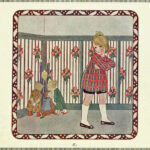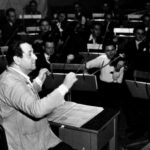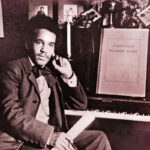The sole passacaglia of J.S. Bach (1685-1750) was first composed for a double-manual pedal harpsichord, and subsequently transcribed for organ. He worked on this masterpiece between 1708 and 1712 — when he was only in his 20’s! Borrowing from the solo chaconne form, this meditation in space opens with a solemn eight-bar ostinato theme in C minor. Eventually, the anchoring theme in the pedals moves to upper voices in twenty variations, and the theme transforms again when it concludes with a double fugue. This fugue is built on the first part of the passacaglia theme in combination with a countertheme in eighth notes. The work closes with a massive climax of suspended harmonies and full instrumental sonority, using all the colors of the orchestra. Robert Schumann described the variations of the passacaglia as “intertwined so ingeniously that one can never cease to be amazed.”
Leopold Stokowski, who created this symphonic transcription, said of this piece, “Bach’s passacaglia is in music, what a great Gothic cathedral is in architecture – the same vast conception – the same soaring mysticism given eternal form. He left us no orchestral compositions of this grandeur, probably because the orchestra was too little developed in his time. His Brandenburg Concerti and the Orchestral Suites are more intimate works written for the salon. The most free and sublime instrumental expressions of Bach are his greater organ works, and one of the greatest of these is the Passacaglia in C Minor. Many do not often enough have the opportunity to hear it, and so to bring it nearer to those who love Bach’s music, I have made this symphonic transcription.
“This passacaglia is one of those musical conceptions whose content is so full and significant, that its medium of expression is of relative unimportance. Whether played on the organ, or by the greatest of all instruments — the orchestra — it is one of the most divinely inspired creations ever conceived.”
Passacaglia & Fugue in C Minor
BWV 582
Composed in 1706-1713
By Johann Sebastian Bach
Arranged by Leopold Stokowski




